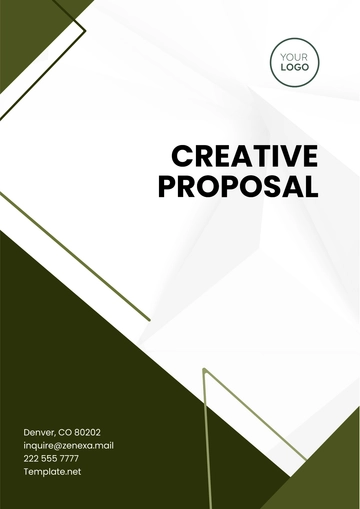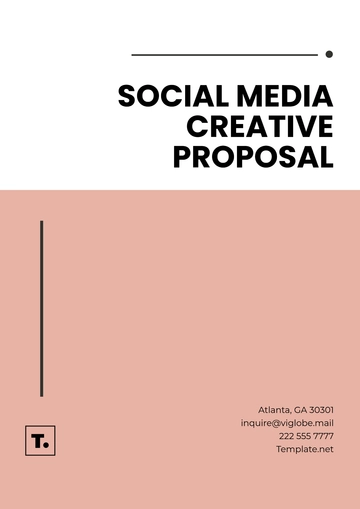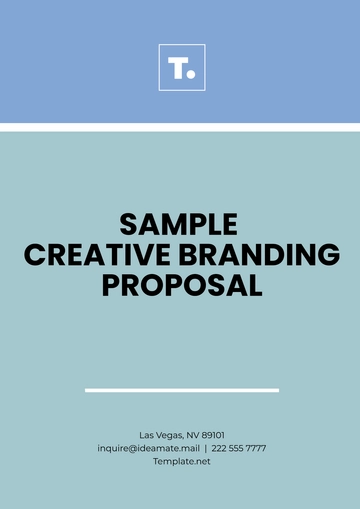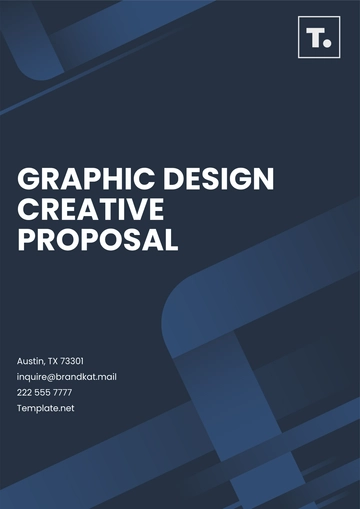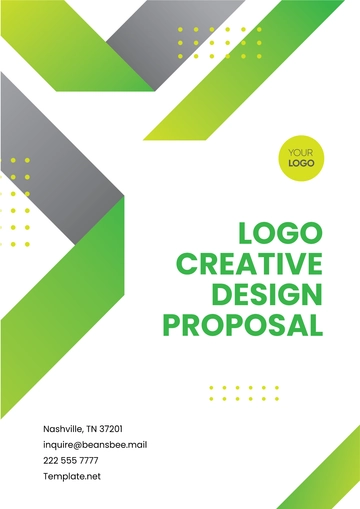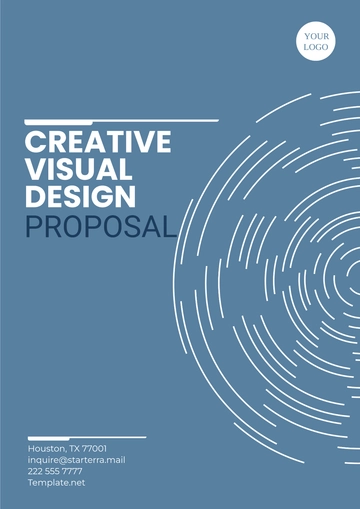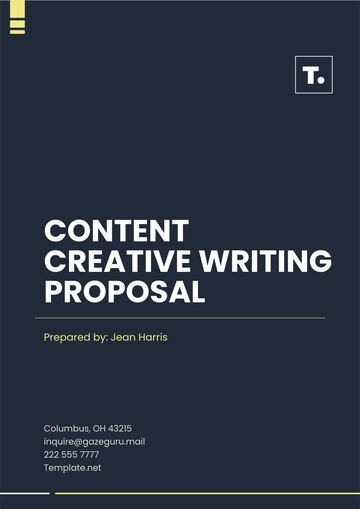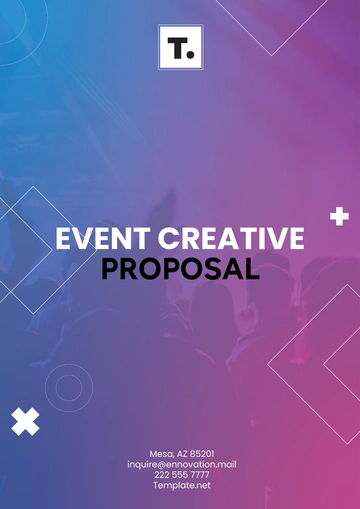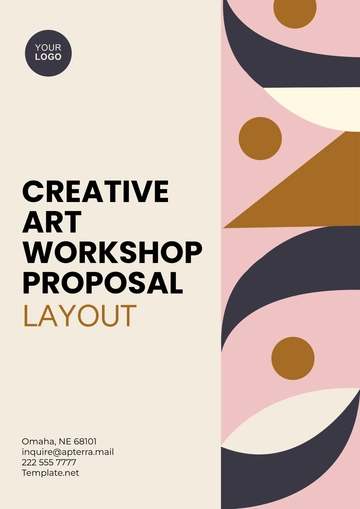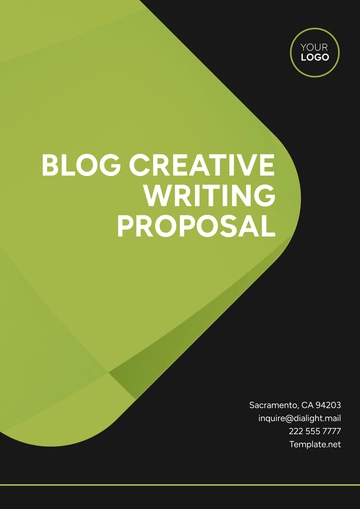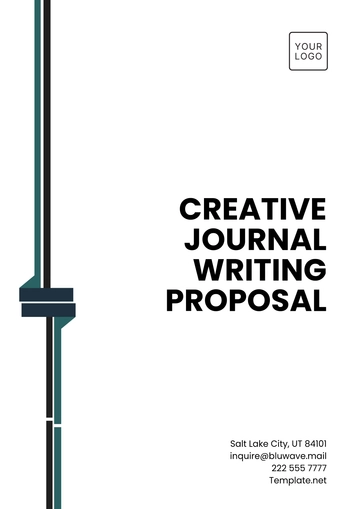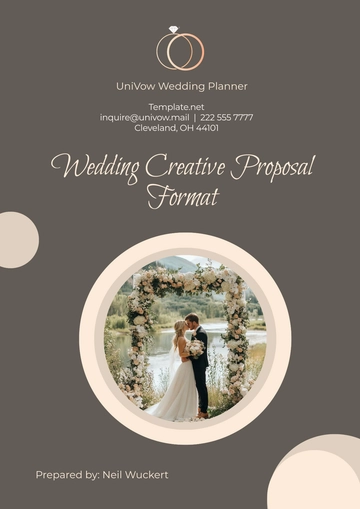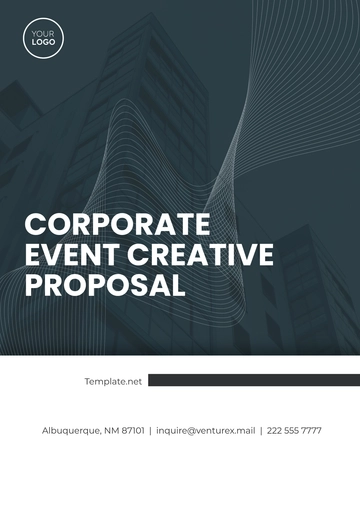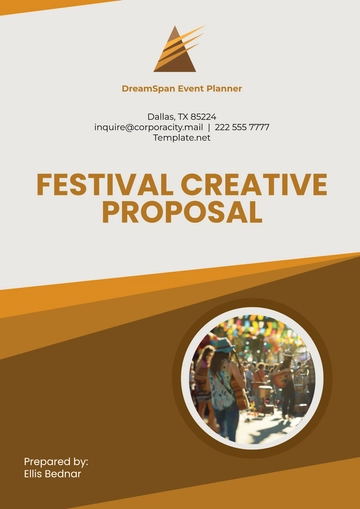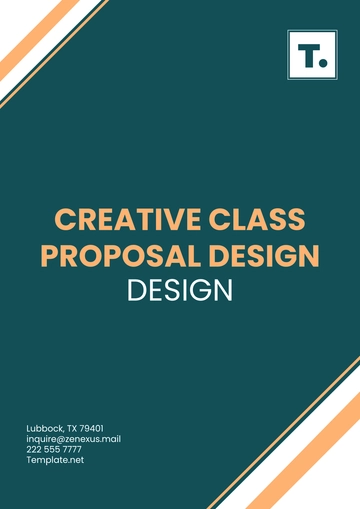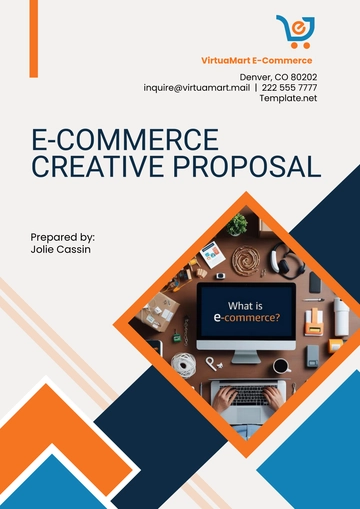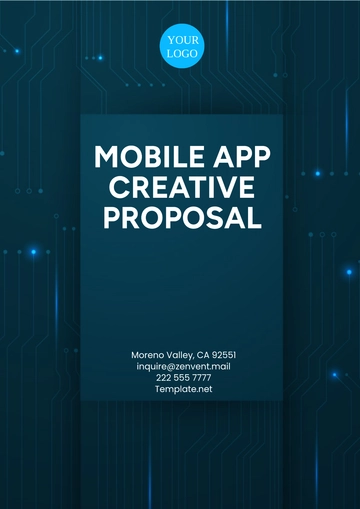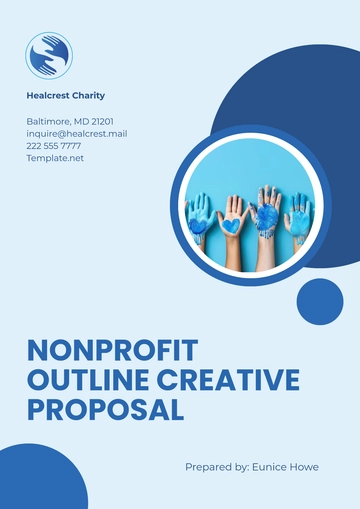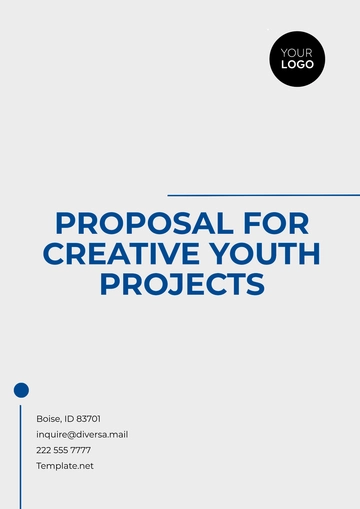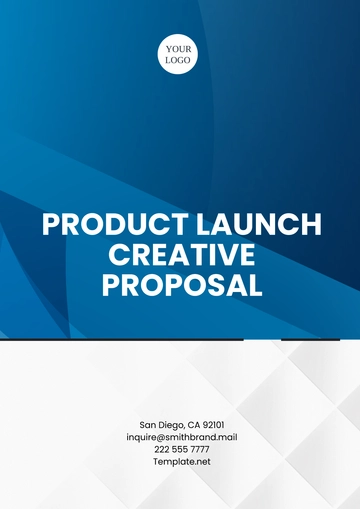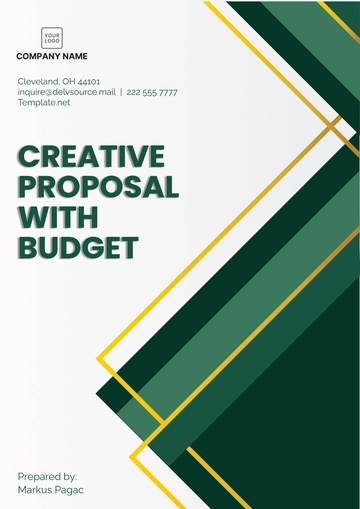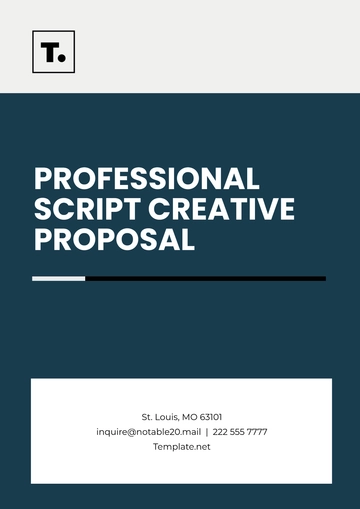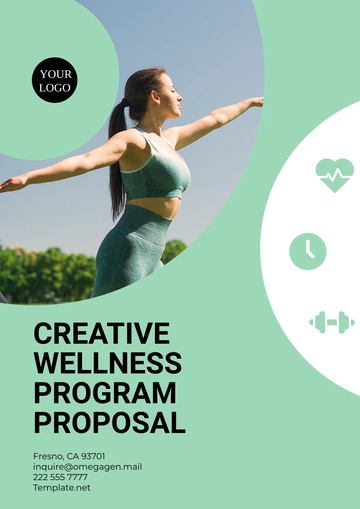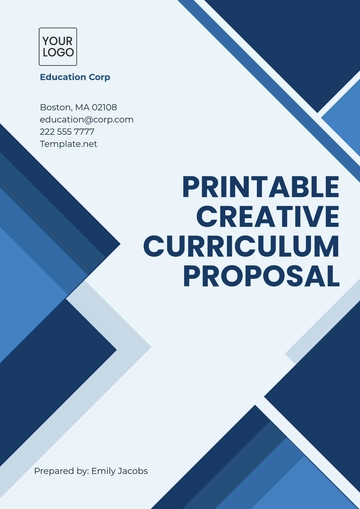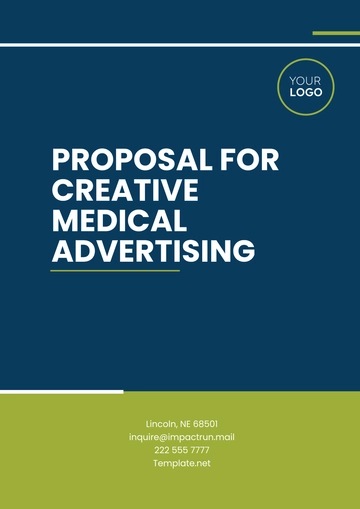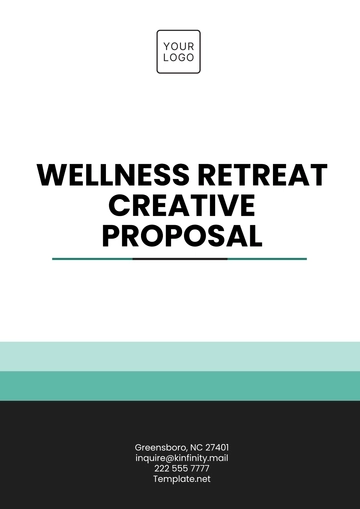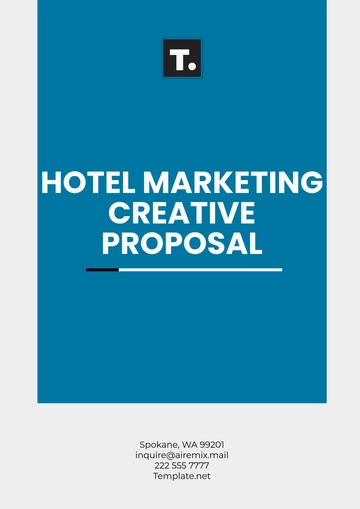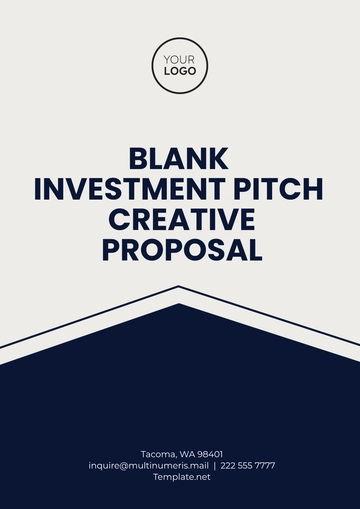Free Media Proposal
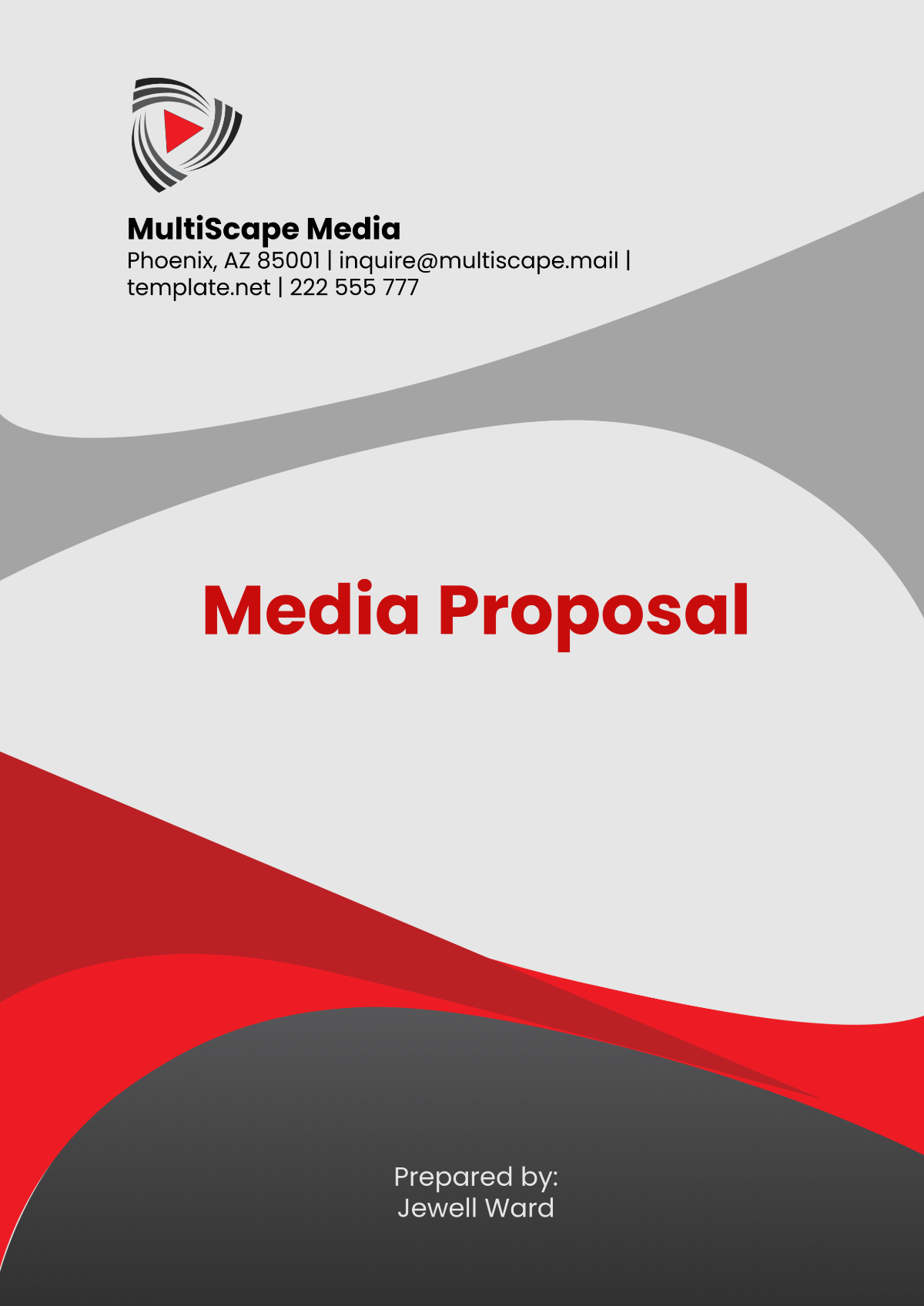
I. Executive Summary
A. Proposal Overview
In 2050, the media industry has undergone profound changes. The digital landscape is constantly evolving, and the rise of immersive technologies, artificial intelligence (AI), and data-driven strategies has reshaped how consumers interact with brands. This proposal from [Your Company Name] outlines a comprehensive media strategy designed to capitalize on these technological advancements and reach new levels of engagement and brand recognition for [Your Client Name]'s [Product Name].
Our approach combines innovative digital advertising, content creation, and cutting-edge tools to deliver an impactful, cross-channel campaign. Our goal is to drive measurable business outcomes for [Your Client Name], from increased brand awareness to higher sales conversions and a deeper connection with your target audience. We believe that through this multi-faceted strategy, [Your Client Name] will achieve their goals and position themselves as a leader in the industry by harnessing the full potential of modern media channels.
This proposal will provide an in-depth look at the market conditions, audience demographics, competitive landscape, and our recommended media strategies to ensure that the [Product/Event Name] reaches its target audience effectively and efficiently. By taking a comprehensive, data-driven approach to every stage of the media campaign, we are confident that [Your Client Name] will experience substantial growth and long-term success.
B. Strategic Objectives
Increase Brand Awareness: Our primary objective is to elevate [Your Client Name]'s visibility and brand recognition across multiple platforms. Through the targeted reach of [5 million] people, our campaigns will ensure that [Your Client Name] occupies a significant position in the minds of their target consumers. We will utilize AI-powered tools to deliver the right message to the right person at the right time, making sure that [Your Client Name] stands out among competitors.
Enhance Engagement: Beyond raising awareness, we will focus on actively engaging with the target audience. We aim to increase engagement rates by [20%] compared to industry benchmarks, ensuring that interactions with the brand are not only frequent but meaningful. Our content strategy will include interactive elements like polls, AR/VR experiences, and personalized messaging to foster deeper relationships with consumers.
Drive Sales: Ultimately, the goal is to drive conversions and sales. With carefully optimized digital campaigns, we aim to achieve a [15%] increase in sales, leveraging data analytics and performance insights to continually refine our approach. By targeting high-intent customers and utilizing personalized calls-to-action, we will maximize conversion rates and revenue generation for [Your Client Name].
II. Market Analysis
A. Industry Trends in 2050
The media industry in 2050 has experienced several notable trends that have reshaped how brands communicate with consumers. These trends present both opportunities and challenges for companies looking to maintain relevance and competitive advantage.
Artificial Intelligence-Driven Advertising: One of the most significant changes in the media landscape is the integration of AI into advertising strategies. Machine learning algorithms now power personalized ads that target consumers based on real-time behavior, preferences, and demographic data. These advancements make it possible to deliver hyper-targeted campaigns that are more relevant and engaging, improving both reach and ROI. AI is also being used to optimize ad delivery, adjusting campaigns in real-time based on performance metrics.
Immersive Technologies: The rise of augmented reality (AR) and virtual reality (VR) has created new opportunities for interactive media. Consumers now expect more than just passive consumption of content—they want to interact with brands in meaningful and engaging ways. AR and VR campaigns are proving effective in boosting customer engagement, with companies using these technologies to create experiences that blur the line between the digital and physical worlds. [Your Company Name] proposes to incorporate AR/VR experiences into the media strategy to create memorable moments for the target audience.
Sustainability in Media Production: As environmental concerns become more pressing, consumers are increasingly conscious of the sustainability efforts of the brands they support. In response, many companies have adopted eco-friendly practices in their media production and delivery. From minimizing carbon footprints in the creation of digital content to selecting sustainable advertising channels, brands are using their environmental commitments as a selling point. In this campaign, [Your Company Name] will prioritize sustainability and ethical practices, ensuring that all media activities align with the values of the target audience.
Video-First Content Strategy: Video continues to dominate as the preferred format for digital content consumption. In fact, studies show that by 2050, video accounts for over [80%] of internet traffic, with social media platforms and video streaming services at the forefront. Brands are increasingly adopting video-first strategies to capture attention and deliver compelling stories. Our media plan will include video content across multiple platforms, ensuring maximum exposure for [Your Client Name].
B. Audience Demographics
Understanding the audience is critical to crafting a successful media strategy. In 2050, consumer behaviors have evolved, and their media consumption habits have become more diverse and personalized.
The following table outlines the key demographics of [Your Client Name]'s target audience and their preferences when it comes to media consumption.
Table 1: Audience Profile
Age Group | Percentage (%) | Key Behaviors | Preferred Channels |
|---|---|---|---|
18-24 | 25% | Heavy mobile usage, prefer short videos | Social media, mobile apps |
25-34 | 35% | Active in career growth, multitaskers | Blogs, podcasts |
35-44 | 20% | Brand loyalty, value-driven | Websites, email campaigns |
45-54+ | 20% | Family-oriented, decision-makers | Television, community forums |
The largest segment of the target audience, comprising [35%] of the market, falls within the [25-34] age group. These individuals are typically in the early stages of their careers and are highly active online, engaging with content across a range of platforms. They value authenticity, convenience, and personalized experiences, making them ideal for the tailored messaging and targeted campaigns we plan to implement.
The [18-24] age group, while slightly smaller at [25%], represents a critical audience for [Your Client Name], particularly due to their heavy use of mobile devices and social media. This group prefers quick, easily consumable content, such as short videos and social media posts. Engaging with them through video content and interactive ads will be key to ensuring that the brand remains top of mind.
C. Competitive Analysis
The competitive landscape for [Your Client Name] is evolving rapidly, with both established players and new entrants vying for market share. A review of key competitors reveals the following insights:
Key Competitors: Companies like [Competitor A] and [Competitor B] have made significant investments in digital media. However, their strategies tend to focus heavily on traditional digital advertising methods, such as display ads and search engine marketing, which are less effective at driving long-term customer engagement. Their reliance on conventional strategies has left a gap in personalized and interactive media campaigns.
Market Gap: Despite heavy investment in digital advertising, many competitors have yet to fully embrace immersive technologies like AR/VR. This gap presents a significant opportunity for differentiation, allowing [Your Client Name] to offer a unique experience that resonates deeply with the target audience.
Consumer Preferences: In 2050, consumers are more discerning than ever before. According to recent studies, [60%] of consumers are more likely to engage with brands that demonstrate a commitment to sustainability and ethical business practices. This trend presents an opportunity for [Your Client Name] to stand out by incorporating green media practices and aligning with the values of the target audience.
III. Media Strategy
A. Campaign Overview
Our media campaign for [Your Client Name] will leverage a blend of traditional digital media and cutting-edge technologies to achieve the following objectives:
Engagement-Driven Content: We will create content that resonates with the target audience by addressing their interests, pain points, and values. This will include thought leadership articles, social media campaigns, and video content that fosters interaction.
Cross-Platform Strategy: To maximize reach, the campaign will run across multiple platforms, from social media and podcasts to email and video streaming services. By diversifying the media mix, we will ensure that the campaign reaches the right audience at the right time, no matter where they spend their time.
Personalized Messaging: Leveraging AI, we will deliver personalized messaging to each audience segment, optimizing the chances of conversion. This includes dynamic content that adapts to the preferences and behaviors of individual users.
B. Channel Selection
Table 2: Recommended Channels
Channel | Purpose | Estimated Reach | Budget Allocation ($) |
|---|---|---|---|
Social Media | Brand awareness, engagement | 2 million | 50,000 |
Display Advertising | Traffic generation | 1 million | 30,000 |
Email Campaigns | Lead nurturing | 500,000 | 15,000 |
Video Platforms | Immersive content | 3 million | 55,000 |
Podcasts | Thought leadership | 200,000 | 10,000 |
We will prioritize channels that align with the audience's consumption habits, ensuring that the media strategy is both cost-effective and impactful. Social media platforms will be central to the strategy, enabling [Your Client Name] to build relationships with the audience through engaging, shareable content. Video content will be created for platforms like YouTube, TikTok, and Instagram, while podcasts will be used to share thought leadership and valuable insights about the industry.
C. Content Creation
The content strategy will include the following components:
Video Content: We will create [10] high-quality, engaging videos, optimized for social media and video platforms. These will include behind-the-scenes footage, customer testimonials, and short-form promotional videos.
Blog Articles: A series of [20] informative blog articles will be published on [Your Client Name]'s website and syndicated across relevant platforms. These articles will focus on product benefits, industry trends, and customer success stories.
Interactive Content: Using AR/VR technology, we will develop [2] immersive experiences that allow users to engage directly with the brand. These will be featured on social media and interactive platforms to create a memorable experience for the target audience.
IV. Implementation Plan
A. Timeline and Milestones
To ensure the success of this media strategy, we have developed a clear and achievable timeline for execution, which will be broken down into phases. Each phase has specific milestones that will guide the project from start to finish. The overall duration of the campaign will be [12] months, with specific objectives tied to each phase.
Table 3: Campaign Timeline
Phase | Timeline | Key Milestones |
|---|---|---|
Phase 1: Planning & Research | Month 1-2 | - Market research and audience segmentation complete. |
Phase 2: Content Creation & Design | Month 3-5 | - Create [10] video pieces. |
Phase 3: Campaign Launch & Promotion | Month 6 | - Launch video and blog campaigns across selected platforms. |
Phase 4: Performance Monitoring & Optimization | Month 7-9 | - Monitor performance against KPIs. |
Phase 5: Scaling & Expansion | Month 10-12 | - Scale up high-performing content. |
Each phase has specific deliverables and key performance indicators (KPIs) that will be tracked to ensure the success of the campaign. Regular progress reports will be shared with [Your Client Name] to provide transparency and facilitate decision-making.
B. Resource Allocation
Effective resource management is vital to the success of the campaign. [Your Company Name] has extensive experience in managing resources for large-scale media campaigns, and we will apply this expertise to ensure the proper allocation of both human and financial resources. The resources will be allocated across three key areas:
Personnel: A team of [5] specialists will be assigned to the project, each with a clearly defined role:
Project Manager: [1] person will oversee the entire campaign, ensuring that all milestones are met on time and within budget.
Content Creators: [2] people will focus on the development of video content, blogs, and AR/VR experiences.
Digital Marketing Experts: [2] people will handle the implementation and optimization of paid media, including social media and display advertising.
Technology: We will invest in AI-powered marketing automation tools, video production software, and AR/VR development platforms. This will ensure the delivery of high-quality content and personalized, data-driven ad campaigns.
Budget: The total budget for the campaign is estimated at [$500,000], with funds allocated as follows:
Category
Estimated Cost
Content Creation
$150,000
Media Buying & Distribution
$200,000
Technology & Tools
$75,000
Influencer & Partnership Fees
$50,000
Analytics & Reporting
$25,000
By ensuring the optimal allocation of resources across each category, we can maximize the effectiveness of the campaign and achieve the desired results within budget constraints.
V. Measurement and Analytics
A. Key Performance Indicators (KPIs)
To measure the success of the campaign, we will track several key performance indicators (KPIs) that are aligned with the objectives outlined in the executive summary. These KPIs will help assess the effectiveness of the strategy in real-time and provide valuable insights for optimization. The following are the primary KPIs for this campaign:
Brand Awareness Metrics:
Impressions: The total number of times content is displayed. Aiming for [50 million] impressions across all platforms.
Reach: The total number of unique individuals who have seen the content. We aim to reach [10 million] unique users through targeted channels.
Engagement Metrics:
Click-Through Rate (CTR): The percentage of people who click on an ad or link. Aiming for a CTR of at least [2%], above the industry average of [1.5%].
Engagement Rate: The total interactions (likes, comments, shares) relative to impressions. Our target is an engagement rate of [5%] across social media and video content.
Conversion Metrics:
Sales Conversion Rate: The percentage of engaged users who complete a desired action (e.g., purchase, sign-up). We aim for a conversion rate of [3%] on all paid media channels.
Cost per Acquisition (CPA): The cost of acquiring a customer through the campaign. Our target CPA is [$30] or lower, depending on the channel.
Customer Retention Metrics:
Repeat Purchase Rate: The percentage of customers who make repeat purchases or engagements. We aim for a [20%] increase in repeat customers over the campaign period.
Customer Lifetime Value (CLTV): The total revenue a customer generates during their relationship with the brand. We aim to increase CLTV by [15%] over the course of the campaign.
B. Analytics Tools
To measure and track these KPIs, we will use a combination of advanced analytics and tracking tools, including:
Google Analytics: For monitoring website traffic, user behavior, and conversion rates. This tool will help assess the effectiveness of our content and digital ad campaigns.
Social Media Insights: Built-in analytics tools on platforms like Facebook, Instagram, LinkedIn, and TikTok will be used to track engagement, reach, and demographic data.
AI-Powered Marketing Analytics: Tools that utilize artificial intelligence will help automate the tracking of campaign performance and provide real-time recommendations for optimization. These tools will offer predictive analytics to forecast campaign success and suggest adjustments based on data patterns.
Customer Relationship Management (CRM) Tools: CRM platforms such as Salesforce or HubSpot will be used to track customer interactions and conversions, linking media efforts to sales outcomes.
Regular reports will be generated and analyzed to provide a clear understanding of campaign performance. These reports will be shared with [Your Client Name] on a monthly basis, with an in-depth review at the [6-month] and [12-month] milestones to assess the long-term success of the campaign.
VI. Budget Proposal
A. Detailed Cost Breakdown
A detailed budget proposal has been outlined, taking into account the resources required for content creation, media distribution, technology, and measurement. Below is a breakdown of the estimated costs involved in executing the campaign:
Table 4: Budget Breakdown
Category | Estimated Cost ($) |
|---|---|
Content Creation | $150,000 |
Media Buying & Distribution | $200,000 |
Technology & Tools | $75,000 |
Influencer & Partnership Fees | $50,000 |
Analytics & Reporting | $25,000 |
Total Estimated Budget | $500,000 |
The content creation budget will be used to produce video assets, blogs, AR/VR experiences, and other forms of content designed to engage the target audience. Media buying and distribution will cover the costs associated with ad placements across social media, search engines, and other platforms. Technology costs include investments in AI tools, video production software, and other resources needed for content optimization. The influencer fees will go toward securing partnerships with industry leaders and popular influencers in the space. Analytics and reporting costs will cover the tools needed for tracking and measuring the success of the campaign.
B. Return on Investment (ROI)
Based on the KPIs outlined earlier, we expect a positive return on investment (ROI) from this campaign. By tracking the success of media efforts through precise measurement, we will be able to optimize the campaign and drive maximum value for [Your Client Name]. We expect the campaign to generate a [30%] ROI based on increased sales, customer engagement, and long-term brand loyalty. This estimate is based on industry benchmarks for similar campaigns in 2050.
VII. Conclusion
A. Final Summary
In summary, [Your Company Name] has developed a comprehensive media strategy that combines cutting-edge technologies with proven methods for engaging and converting customers. With a data-driven approach, personalized messaging, and a focus on high-engagement content, we are confident that [Your Client Name] will see substantial growth and market impact in 2050.
B. Call to Action
We look forward to partnering with [Your Client Name] and implementing this strategic media plan. The next steps are to review and approve the proposal, finalize the budget allocation, and begin the planning phase. Together, we can ensure that [Your Client Name] achieves its business objectives and establishes a dominant presence in the market.
Let’s take the next step in transforming your brand’s media strategy into a powerful tool for success.
- 100% Customizable, free editor
- Access 1 Million+ Templates, photo’s & graphics
- Download or share as a template
- Click and replace photos, graphics, text, backgrounds
- Resize, crop, AI write & more
- Access advanced editor
Present your media ideas with confidence using the Media Proposal Template from Template.net. This editable and customizable template helps you outline your objectives, strategies, and deliverables professionally. Modify it effortlessly using the AI Editor Tool to match your client’s needs.
You may also like
- Business Proposal
- Research Proposal
- Proposal Request
- Project Proposal
- Grant Proposal
- Photography Proposal
- Job Proposal
- Budget Proposal
- Marketing Proposal
- Branding Proposal
- Advertising Proposal
- Sales Proposal
- Startup Proposal
- Event Proposal
- Creative Proposal
- Restaurant Proposal
- Blank Proposal
- One Page Proposal
- Proposal Report
- IT Proposal
- Non Profit Proposal
- Training Proposal
- Construction Proposal
- School Proposal
- Cleaning Proposal
- Contract Proposal
- HR Proposal
- Travel Agency Proposal
- Small Business Proposal
- Investment Proposal
- Bid Proposal
- Retail Business Proposal
- Sponsorship Proposal
- Academic Proposal
- Partnership Proposal
- Work Proposal
- Agency Proposal
- University Proposal
- Accounting Proposal
- Real Estate Proposal
- Hotel Proposal
- Product Proposal
- Advertising Agency Proposal
- Development Proposal
- Loan Proposal
- Website Proposal
- Nursing Home Proposal
- Financial Proposal
- Salon Proposal
- Freelancer Proposal
- Funding Proposal
- Work from Home Proposal
- Company Proposal
- Consulting Proposal
- Educational Proposal
- Construction Bid Proposal
- Interior Design Proposal
- New Product Proposal
- Sports Proposal
- Corporate Proposal
- Food Proposal
- Property Proposal
- Maintenance Proposal
- Purchase Proposal
- Rental Proposal
- Recruitment Proposal
- Social Media Proposal
- Travel Proposal
- Trip Proposal
- Software Proposal
- Conference Proposal
- Graphic Design Proposal
- Law Firm Proposal
- Medical Proposal
- Music Proposal
- Pricing Proposal
- SEO Proposal
- Strategy Proposal
- Technical Proposal
- Coaching Proposal
- Ecommerce Proposal
- Fundraising Proposal
- Landscaping Proposal
- Charity Proposal
- Contractor Proposal
- Exhibition Proposal
- Art Proposal
- Mobile Proposal
- Equipment Proposal
- Student Proposal
- Engineering Proposal
- Business Proposal
